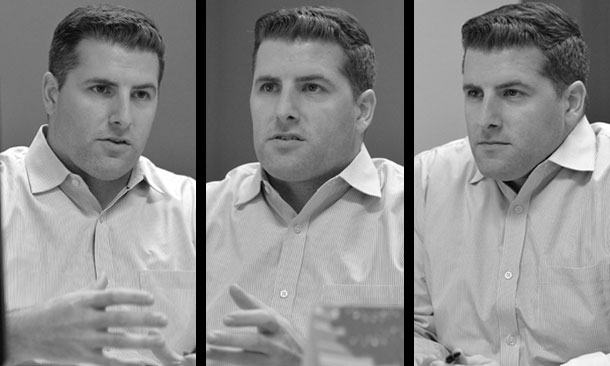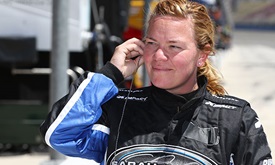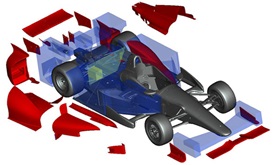Engine Q&A: Technologies in the forefront, future
JAN 07, 2015
This season marks the fourth of engine competition between Chevrolet and Honda, and both are supplying corresponding aerodynamic body kits for the first year.
The Dallara rolling chassis will be utilized for the March 8 season opener in Brasilia, Brazil. The road/street course and short oval aero kits along with the newly-mounted engines make their competition debut March 29 in the Firestone Grand Prix of St. Petersburg.
The engine homologation date is Jan. 12. Basically, homologation is granting approval or confirming the meeting of standards, and – as it refers to the series – the sealing of mandated components for the 2.2-liter, twin turbocharged, direct-injected V6 engines that are fueled with E85.
The parts and complementary technical drawings will be used as references – a spot check system for engine manufacturer competition – during engine teardowns.
The engines produce up to 700 horsepower with a 12,000 RPM rev limit. INDYCAR controls the turbo boost and sets the push-to-pass parameters relative to each of the 17 races. Each full-season entrant is allowed four fresh-built engines from the season start until the start of the following season with a corresponding 10,000-mile allotment.
Marvin Riley, INDYCAR director of engine development, discusses implementation of regulations for 2015 and provides a general outlook for what INDYCAR is investigating for the next generation Verizon IndyCar Series engine platform.

This season is a much smaller open homologation list, but in the sense of the architecture available to the manufacturers to change I think the engines will still be somewhat visibly different to the fans.
The main difference this year is the aero kits, which includes the air horn, side pods, and engine cover. Because the air horn and space available under the bodywork is changing, the subsequent parts that include the pipes that feed to and from the turbos can be different. That’s where I think the engines will look unique and certainly look different from Brazil to St. Pete.
As far as areas available for upgrade, we always have the open items which includes pistons, the valves, the springs, spark plugs, etc., and the connecting rods have a one-year homologation every year. But for the most part, it’s an off year for the engineers working on the engine internals.
The manufacturers are starting to get really close to the edge of the regulations so what we have had to with this latest edition of the rulebook is to better define traction control and to better define how INDYCAR will monitor and police the boost and engine speed. Those are the two major factors by which we control power on the engine – boost pressure and engine speed. We’ve looked closely at those definitions to keep everyone on an even playing field. We want them running up to the limit, but don’t want them running over the limit.

The manufacturers differ really in their turbo placement. Chevy has chosen a placement that is much more aft than Honda for their turbos. Honda’s has been more forward. We’ll see where they end up for St. Pete, but what the manufacturers will do is try to find the right balance that works for their car.
The unique characteristics of their aero kits – depending on how they’ve done the sidepods and the engine cover – will allow them more or less room to change how the piping goes in and out of the turbos. Depending on where they place the turbos and because the turbos are so heavy, it will have an impact on the rotational inertia of the chassis. They work with teams and internally with their own chassis groups to try to optimize the placement. That process will yield different results in the end between the manufacturers.
What they are going to want to do is optimize the path of the piping to minimize pressure drops, to make sure the air flow is as unimpeded as possible and that they are sort of taking advantage of as much free air from the aero kits to minimize the work needed to achieve the pressure levels from the turbos. The turbo is doing work to compress the inlet air, and by increasing the inlet air’s velocity pressure you need to do less work with the turbo and they can affect that with the aero kit and the inlet piping.
Using CFD simulation of the air flow, the engine manufacturers have found out how to minimize pressure losses and maximize the velocity of the air as it enters the turbo. It will reduce the work required to create that pressure, and that can increase the power of the engine. The same can be said for the exhaust. They want to minimize the pressure losses and make sure they have enough room to maximize the tuning pulses of the exhaust that might have a positive impact on power.
Because the aero kits will be such a powerful tool to affect car performance, they even may make tradeoffs in engine performance to benefit the overall car. Why did one manufacturer go in the opposite direction than the other? It likely had to do with aerodynamics.
The aero kit update also puts certain things in the manufacturer’s control, such as the air horn, that they didn’t have under their control before. They can get more creative with air filters, which may take into account some of the unique running that we do in our series because we run on such a variety of tracks – some of which are dirtier than others. Because of the continuity of the schedule, they have experience to take a wider envelope of design and maximize the whole package around it.
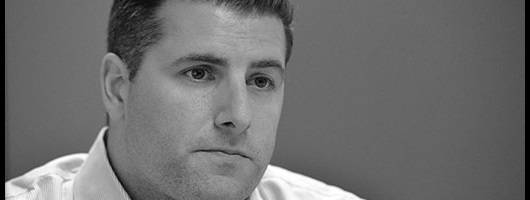
We saw in 2014 a lot more parity in the competition for endurance between the manufacturers. In the end, Honda and Chevy used a similar average number of engines per car, with Honda having a slight edge. Making that leap to 2,500 was challenging but both manufacturers did well. We saw fewer team-related change-outs, and I think that is a great thing for the series because now some of the cost-saving efforts that we’re trying to implement by having these power plants last longer is being achieved and will benefit the manufacturers and help keep them in the series for a long time to come.
The chassis competition will be a new side. Right now the manufacturers are very close in their engine performance. It may seem like one has an edge over the other, but it truly is very close when you look at the data. I expect it to be close again. The manufacturers spend a lot of time working on areas open to them, and I expect updates over the year. Now that both manufacturers have addressed a lot of their durability issues, I think we’ll see a competitive and interesting push forward in engine performance as well this year.
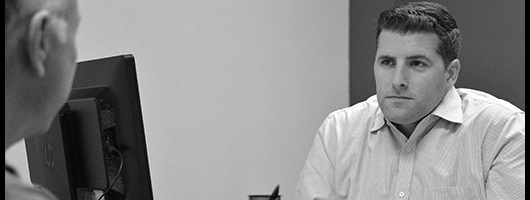
The turbo stays the same and likely will stay the same for years to come. We like that continuity, but we are exploring other areas that are interesting to us. BorgWarner has in its production line other interesting technologies like electronic waste gates and variable turbine geometry, as well as other concepts that would be more interesting to us in future seasons. However, we are sensitive to the costs to the teams so right now we have not done anything to change the turbo spec for this season. That’s not to say we won’t for 2016 or ’17 as far as smaller upgrades that are smart and cost-effective.
INDYCAR has begun investigating a new engine platform for 2018 and we have had introductory talks with the manufacturers about it before I came on board. First we have to establish whether it makes sense cost-wise and that our stakeholders which include the fans, teams, sponsors, and the manufacturers, are interested in moving forward. We’ll be having more conversations.
We want to see progress and technologies that are smart and want to see cars that are relevant to the cars on the road and ideally pushing those technologies forward. However, we need to keep the racing exciting and keep the car performance at a competitive and high level in order to maintain and build upon the great racing product we have now.
Whether we do hybrid or some sort of heat-energy recovery or other energy recovery technologies that we are looking at hasn’t been decided. We’re also considering alternate fuels. No matter what options are on the table, we really like the idea of taking the package and making it more efficient and get more out of it, which is what you’re doing with hybrid or some sort of energy recovery system, and using that to push the car performance forward from where it is now.
Part of what we need to do is look at what targets we want to set for the cars, such as how much faster do we want to go at Indy? We have set certain targets as a series with respect to the Indianapolis 500, but I believe we should see faster road course speeds as well. We also want to make sure we’re doing it safely. As we move forward, it will dictate which technologies we adapt.
It’s not a lot of time for the manufacturers, so we’re already looking at what’s available and where we want to go on a daily basis.











